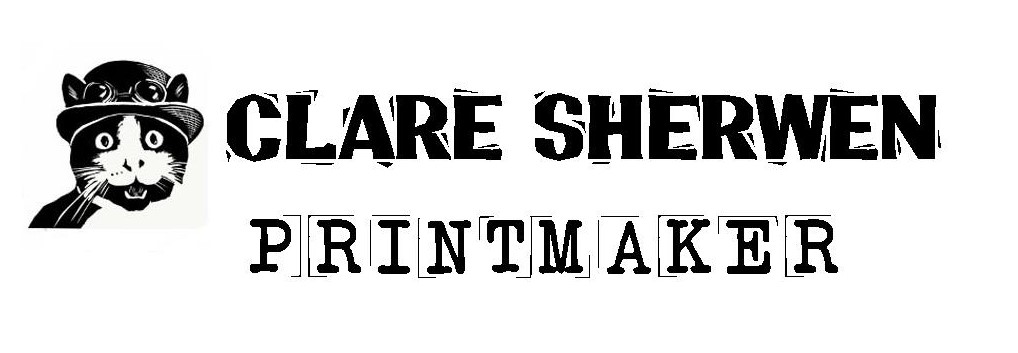 |
| Squirrel Watercolour Painting |
Getting messy adding a mix of blue and black oil based printing ink all over the printing plate until the whole of it is covered in a layer of ink.
Wiping the printing plate with newspaper to remove the ink. This leaves the ink in the heavily textured parts of the plate and removes the ink in the smoother areas to print lighter tones and white.
The printing plate fully wiped. At this point it could be printed and it would just be black and white.
Adding some colour to the squirrel. I added a few rubs of brightly coloured inks with a lot of extender medium added so they would be very transparent. They were then wiped gently to leave a smear of colour.
I then used a stencil of plastic to mask out the squirrel while I coloured the background. I added a very thin layer of green ink a la poupee (with a tightly rolled up piece of cloth) to the background grasses. This meant the original blue/black ink would show through the thin layer of green.
I then removed the stencil and placed the printing plate on the etching press with a dampened piece of watercolour paper over the top. The whole plate, paper and blanket was passed through the press and then the moment of truth when the print was revealed! You never quite know what you are going to get from the printing plate but I was really pleased with this one and I managed to get six colours printed in one go too!
Here's the finished Squirrel collagraph print:
 |
| Squirrel Collagraph Print
And a close up of some of the detail of the print:
Also a close detail of my messy inky hands after my glove split while printing!
|
Clare xx










Hi Clare. This is impressive. I do collographs but in a much more abstract way. What technique did you employ to get the outine of the squirrel that was on the plate?
ReplyDeleteI've never heard of this printing technique before, thanks for sharing!
ReplyDelete